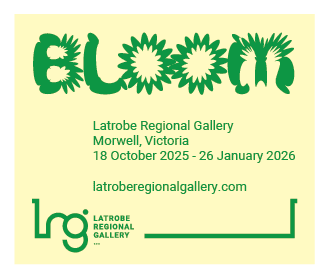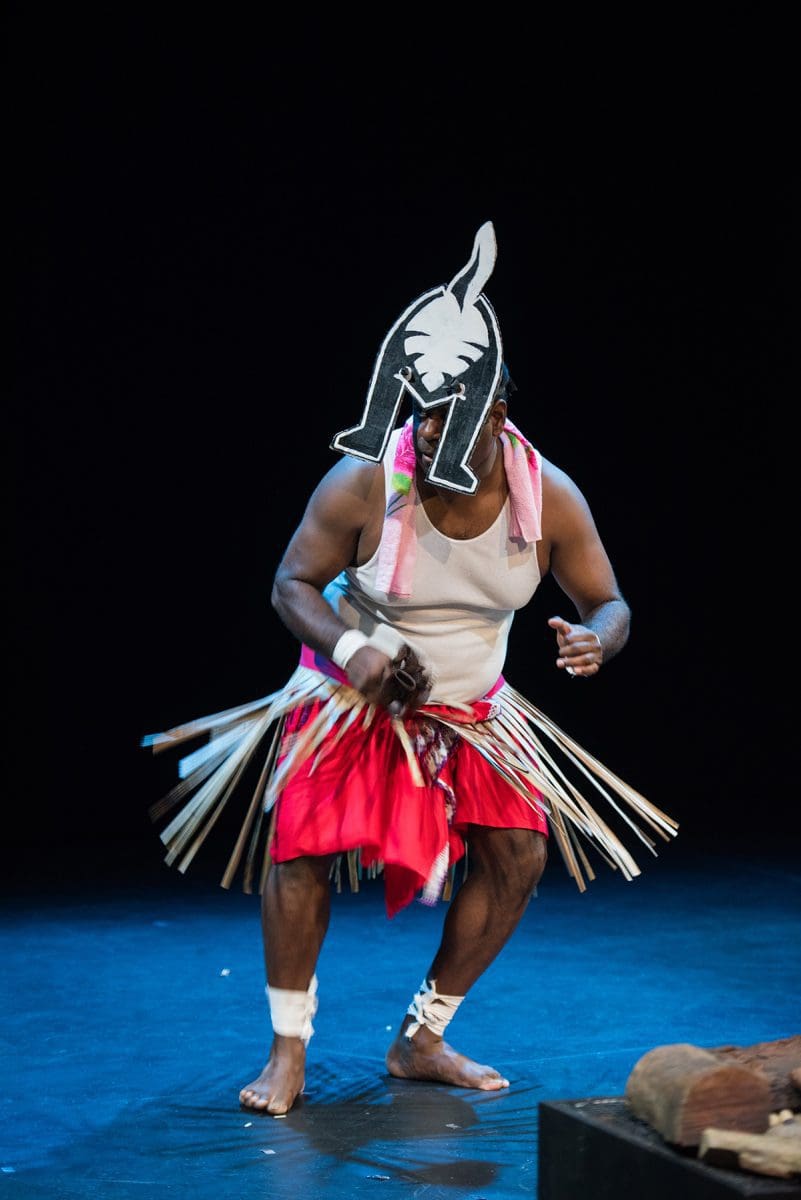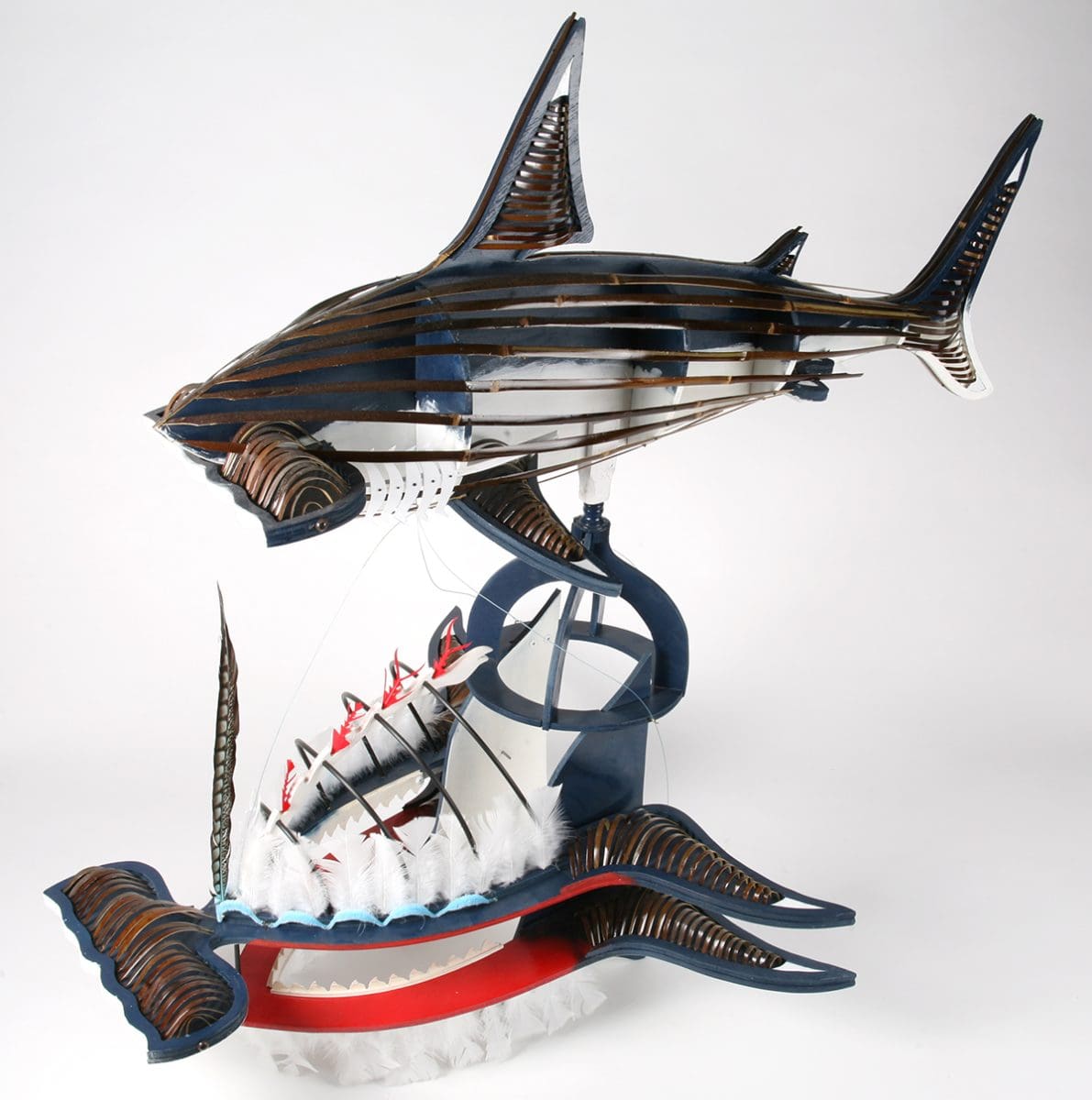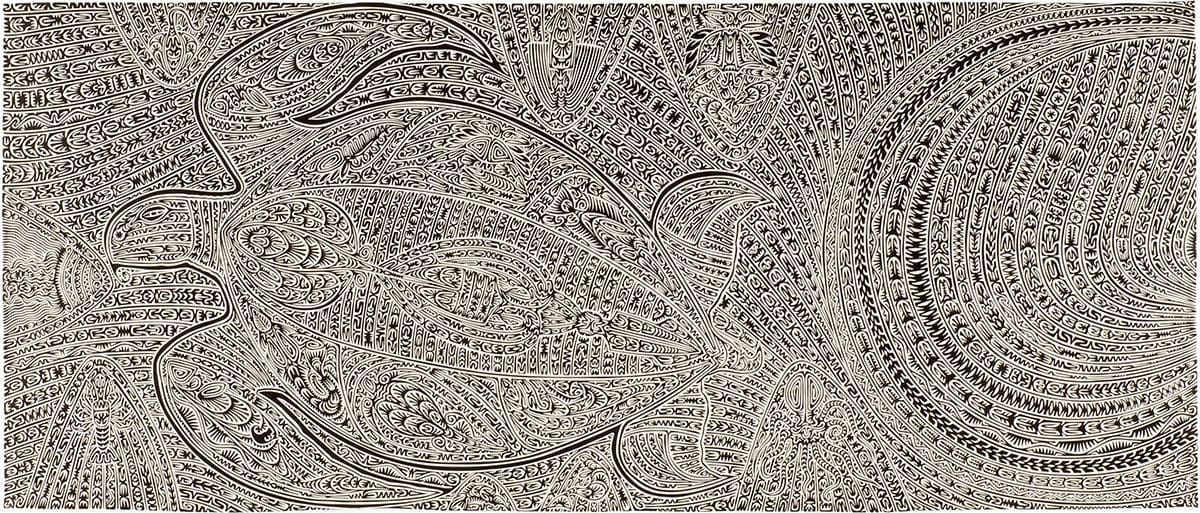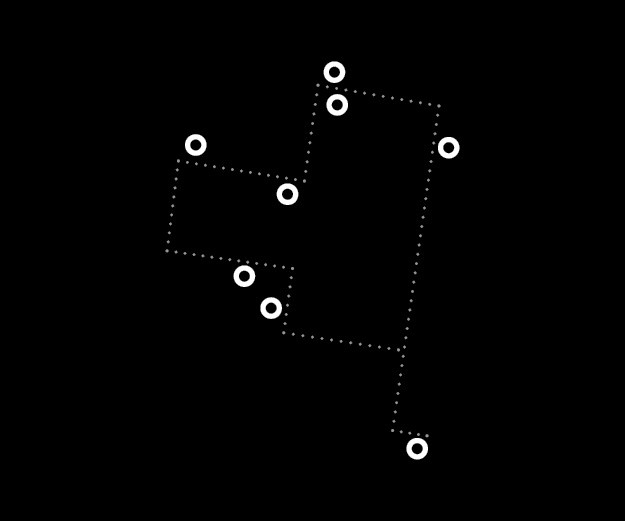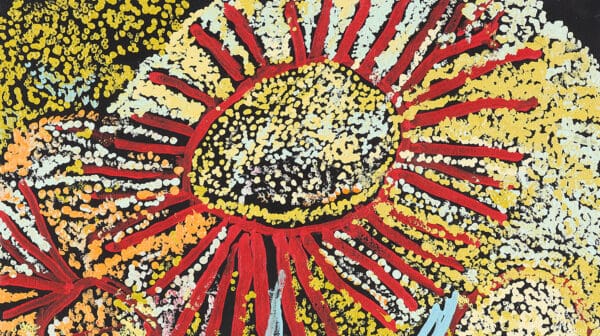The annual Cairns Indigenous Art Fair packs a lot in to just three days in July. Sharne Wolff spoke to Hetti Perkins about her role in the Fair and the importance of presenting Indigenous art on the world stage.
Featuring hundreds of visiting artists from all over Queensland, the annual Cairns Indigenous Art Fair (CIAF) is ready to welcome visitors. The CIAF’s vision is to provide a platform for cultural exchange and economic opportunity for Aboriginal and Torres Strait Islander artists from Queensland.
The CIAF presents a diverse range of events, from exhibitions and an art market, to dance performances, fashions shows, artist’s talks, films and story-time sessions for children. A new event in 2017 is the Gimuy Fish Festival which seeks to promote sustainable seafood harvesting and production.
Heading up the 2017 CIAF program are artistic director Janina Harding and well-known Indigenous curator and writer Hetti Perkins. Sharne Wolff spoke to Hetti about her specialist roles at the Fair, and the increasing engagement of international audiences with Indigenous art.
Sharne Wolff: Together with the CIAF artistic director Janina Harding, you ha ve curated an exhibition of work by Indigenous artists titled Family Values, which will be displayed alongside the art market. Can you give us an idea of how this theme is explored by the exhibiting artists?
Hetti Perkins: The theme of Family Values set by the artistic director, Janina Harding, has inspired myriad and wonderful creative works from artists all over Queensland. The range of responses by artists include drawing on personal family narratives, ancestral relationships to specific sites in country, maintaining traditional practices and symbolically referencing the holistic connection of culture, community and country.
SW: In a another role with the CIAF, you have been facilitating the Collectors & Curators Program for several years now. Can you tell us a little about the program and name some of your highlights?
HP: I have managed the Collectors & Curators Program for five years and this year’s event is particularly exciting with the introduction of the Art Awards. Our group always enjoy the opportunity to meet artists and particularly when we offer a visit to a local community. This year we will also be exploring the new public artworks on Shields Street.
SW: Who is expected to attend the Collectors & Curators Program this year?
HP: This year’s group numbers close to 50 people from all around the country. It includes people who are passionate private collectors, directors and curators at our state institutions, and arts specialists with significant international experience.
SW: In the past few years, the CIAF appears to be attracting an increasing number of international visitors. Do you think this is evidence of more general awareness of Indigenous art overseas?
HP: International interest in Indigenous art has been strong for many years now. I think CIAF is popular with international visitors as they get to experience a wide variety of works from many different genres and regions, and all with a high standard of artistic excellence.
Visitors also enjoy the opportunity to meet the artists and experience the other events (like dance, music, etc.) that provide a comprehensive engagement with Indigenous culture.
SW: Do you think it’s important for Indigenous art to be seen in an international context?
HP: It is important that Indigenous art is seen in an international context as our people have a significant place in the world as the inheritors of the world’s oldest continuous cultural traditions and are among its leading contemporary artists.
SW: One of the CIAF’s goals is to ensure an ethical marketplace for the sale of Indigenous art. How does the Fair achieve this aim?
HP: CIAF plays a leading role in promoting and providing an ethical marketplace for Indigenous artists through working closely with art centres, independent artists and independent galleries of significant standing. As the Fair and art market are curated, visitors can be assured that they are experiencing the best artistic works by aesthetic and ethical criteria.
SW: While we’re talking about ethical sales, what damage does the sale of inauthentic or fake art do to the Indigenous art industry and/or to Indigenous culture in Australia?
HP: Ultimately sales of inauthentic or fake art not only rip-off the artists, they rip-off the buyer.
SW: What are you particularly looking forward to in Cairns?
HP: Seeing all the artists and their works and enjoying the generous hospitality of the traditional custodians and local mob living in and around Cairns!
Cairns Indigenous Art Fair
Cairns Cruise Liner Terminal and other venues
14 July – 16 July


